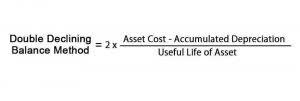
Thus, the concept of contribution margin is used to determine the minimum price at which you should sell your goods or services to cover its costs. The contribution margin ratio is also known as the profit volume ratio. This is because it indicates the rate of profitability of your business. On the other hand, net sales revenue refers to the total receipts from the sale of goods and services after deducting sales return and allowances.

Salesforce
However, your decision-making process must include several other financial considerations and figures. Let’s say we have a company that produces 100,000 units of a product, sells them at $12 per unit, and has a variable costs of $8 per unit. Furthermore, this ratio is also useful in determining the pricing of your products and the impact on profits due to change in sales.

Company
The first step to calculate the contribution margin is to determine the net sales of your business. Net sales refer to the total revenue your business generates as a result of selling its goods or services. This means that $15 is the remaining profit that you can use to cover the fixed cost of manufacturing umbrellas. Also, you can use the contribution per unit formula to determine the selling price of each umbrella. Contribution Margin refers to the amount of money remaining to cover the fixed cost of your business. That is, it refers to the additional money that your business generates after deducting the Interior Design Bookkeeping variable costs of manufacturing your products.
Contribution Margin

CFI is the global institution behind the financial modeling and valuation analyst FMVA® Designation. CFI is on a mission to enable anyone to be a great financial analyst and have a great career path. In order to help you advance your career, CFI has compiled many resources to assist you along the path.
- Thus, the total manufacturing cost for producing 1000 packets of bread comes out to be as follows.
- The contribution margin is given as a currency, while the ratio is presented as a percentage.
- Accordingly, the per-unit cost of manufacturing a single packet of bread consisting of 10 pieces each would be as follows.
- They also use this to forecast the profits of the budgeted production numbers after the prices have been set.
- It represents how much money can be generated by each unit of a product after deducting the variable costs and, as a consequence, allows for an estimation of the profitability of a product.
- The $30.00 represents the earnings remaining after deducting variable costs (and is left over to cover fixed costs and more).
Determining your contribution margin per product or product line can ensure each unit is profitable and allow you to determine whether prices make sense in a competitive marketplace. This calculation can also help you decide whether or not it’s worth it to continue selling a specific product or line while streamlining sales and operations. Ultimately, the key financial data you obtain is valuable for improving business decision-making. It also results in a contribution margin ratio of $14/$20, or 70%.
Selling products at the current price may no longer make sense, and if the contribution margin is very low, it may be worth discontinuing the product line altogether. This strategy can streamline operations and have a positive impact on a firm’s overall contribution margin. This means Dobson books company would either have to reduce its fixed expenses by $30,000. As you can see, the net profit has increased from $1.50 to $6.50 when the packets sold increased from 1000 to 2000. However, the contribution margin for selling 2000 packets of whole wheat bread would be as follows. This metric is typically used to calculate the break even point of a production process and set the pricing of a product.

Suppose you’re tasked with calculating the contribution margin ratio of a company’s product. It can be important to bookkeeping perform a breakeven analysis to determine how many units need to be sold, and at what price, in order for a company to break even. The contribution margin ratio represents the marginal benefit of producing one more unit.

You need to fill in the following inputs to calculate the contribution margin cm ratio using this calculator. Thus, to arrive at the net sales of your business, you need to use the following formula. For instance, in Year 0, we use the following formula to arrive at a contribution margin of $60.00 per unit. The 60% CM ratio implies the contribution margin for each dollar of revenue generated is $0.60. If the contribution margin is too low, the current price point may need to be reconsidered.
How to improve contribution margin
Management uses the contribution margin in several different forms to production and pricing decisions within the business. This concept is especially helpful to management in calculating the breakeven point for a department or a product line. Management uses this metric to understand what price they are able to charge for a product without losing money as production increases and scale continues. It also helps management understand which products and operations are profitable and which lines or departments need to be discontinued or closed. The second way to improve your contribution margin is to increase revenue on products sold. When you increase your revenue, you effectively reduce the percentage of revenue that goes toward paying variable costs.